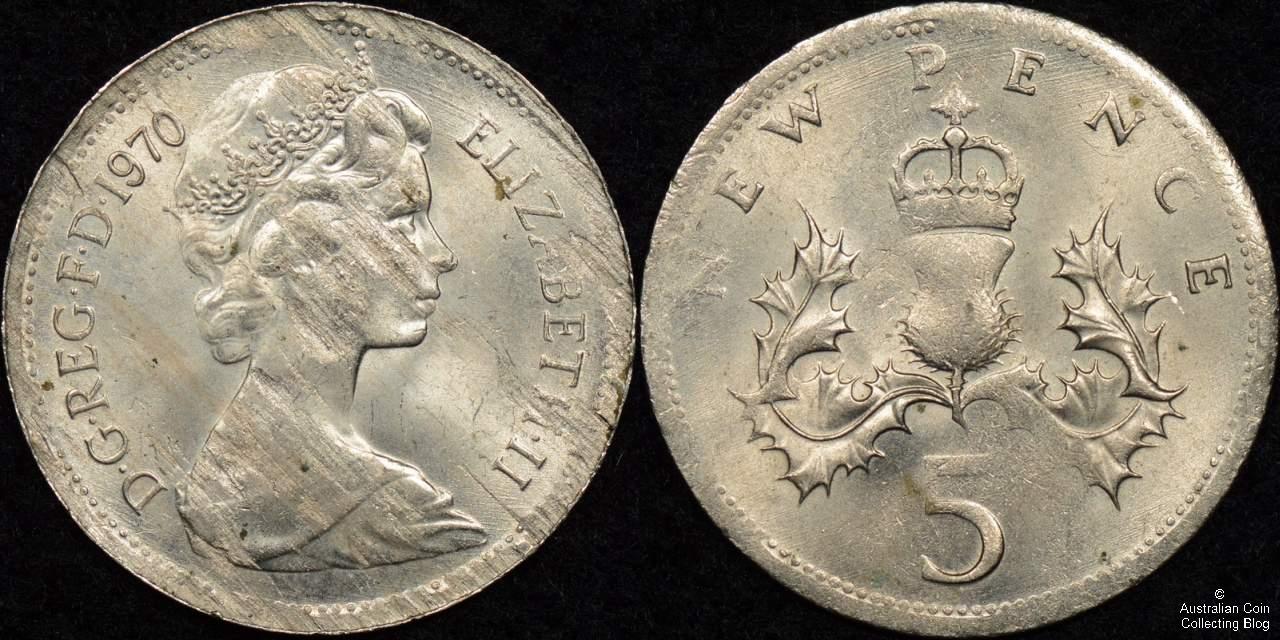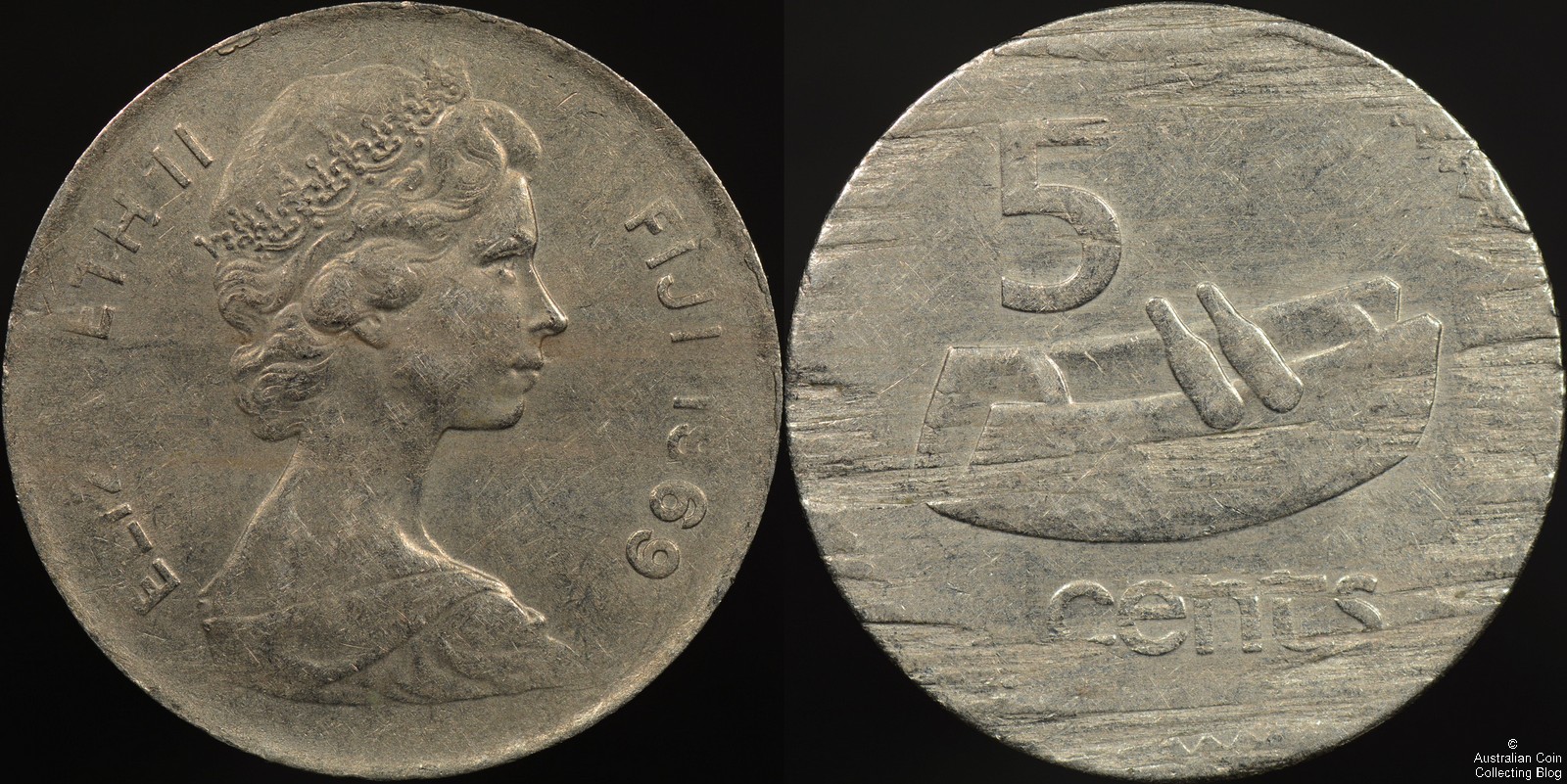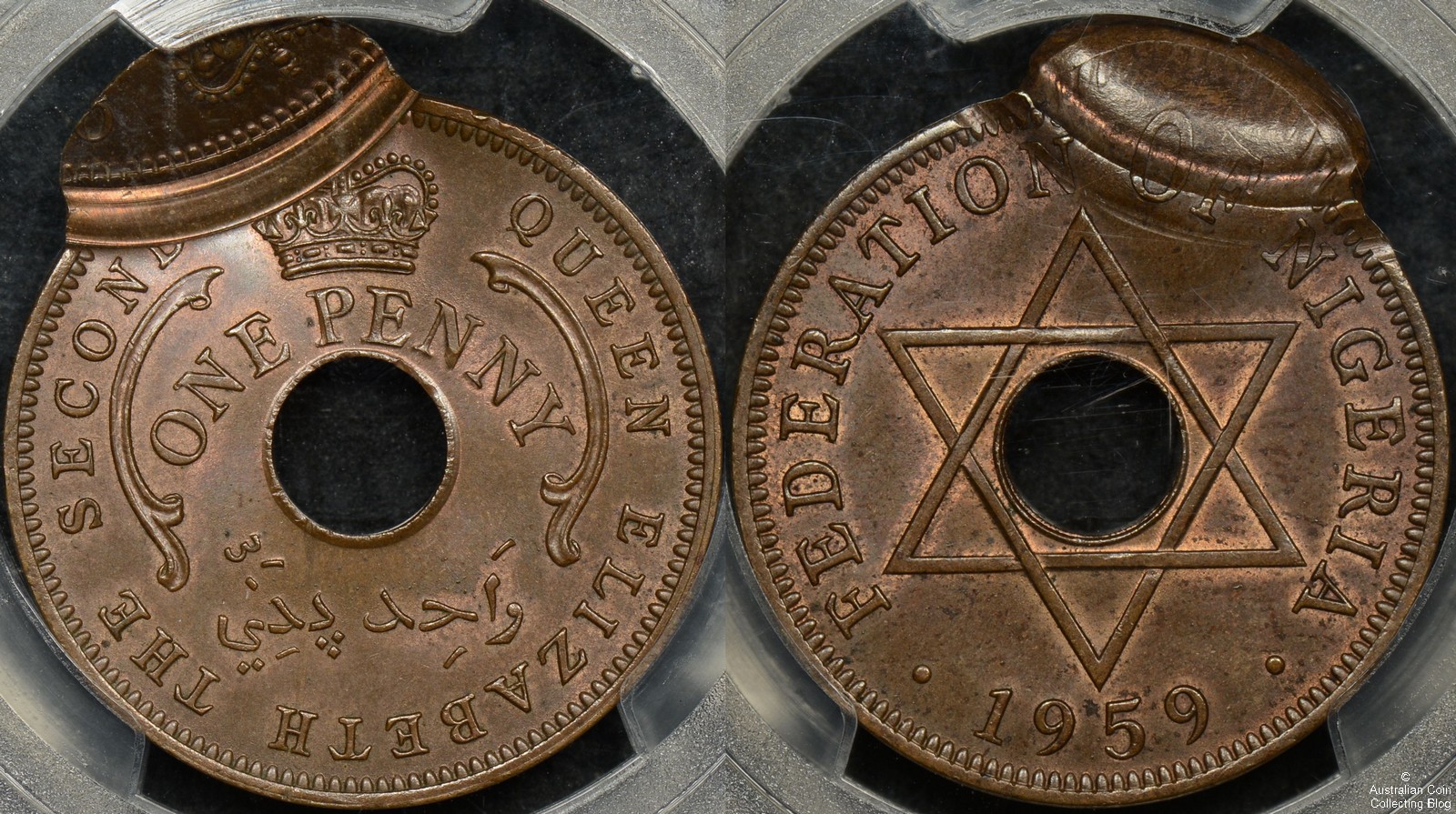Australian coin errors are among the most desirable in the world and prices realised show how popular these mis-strikes are to collectors. For modern errors especially, you can only wonder if the Royal Australian Mint are so strict with their quality control that few of these pieces escape the Mint. As an error collector it’s important to have a handle on how each error occurred so you can be sure the coin you are buying is a genuine coin. It’s both interesting and important to know how the presses work and have an idea of how different types of error coins are made and how they left the Mint without being spotted.
Some types of errors are so rare among Australian coins that the natural (and much more affordable) way to satisfy collecting urges and complete a collection is to find a desired error type on a world coin. For Australian error collectors pre-decimal Commonwealth coins are a natural choice because the obverse of other Commonwealth coins often bear the same portraits of the Kings and Queen that we are already used to. Countries such as Great Britain, New Zealand, Fiji, Ghana and Zambia fall into this category. If a Commonwealth country can’t supply the error you want then it can be worth looking at countries such as India or Pakistan whose coin manufacturing quality control is poor, resulting in a large number of error coins of different types being available. Also, the USA at certain times in their history had poor quality control, especially in the Lincoln cent denomination and interesting types errors are usually always able to be bought. The smart collector who looks outside of Australia at such countries can easily find spectacular errors such as broadstrikes, large off-centers, and double strikes for well under $50, while the same error on an Australian coin would be worth hundreds or even thousands of dollars.
Below is an error rarely seen on an Australian coin. It’s a type of split planchet error where the planchet split in two pieces before the coin was struck. So the coin was struck on only a half thickness planchet and the result is a weak strike with visible striations on one side where the planchet split. It’s extremely rare to see this on an Australian coin and if found would fetch hundreds of dollars. The examples shown, a Fiji 5 cent was picked up for just $20 on eBay and the British 5 pence came from a coin dealers cabinet for $40. Interestingly both error coins shown here were minted at the Royal Mint.
The coin below is a double struck error coin, the second strike 90% off centre. It’s from Nigeria and is graded by PCGS as MS64BN or choice uncirculated. A stunning high grade error coin that if Australian would fetch many hundreds of dollars. It was in fact purchased in the slab for less than what it would cost to put the coin in that slab! For a keen error collector it’s a no-brainer to pick up these errors when they are seen to satisfy the collecting urges. Interestingly again this coin is from another British colony and was struck at the Royal Mint.




